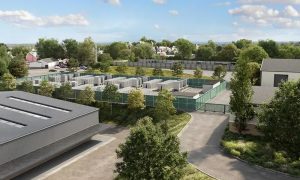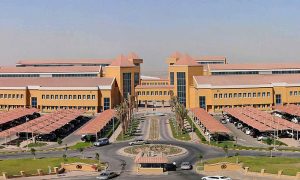The changing nature of building management systems
Koen Bogers, senior executive vice president of building technologies at Siemens Middle East, outlines how BMS is moving into new territory

Koen Bogers, senior executive vice president of Building Technologies at Siemens Middle East, outlines how BMS is moving into new territory.
What work has Siemens been doing in the building management systems (BMS) field recently?
We work as a technology partner, consultant, service provider, system integrator and product supplier for building technologies, including fire safety, security, building automation, heating, ventilation and air conditioning (HVAC), as well as energy management products and services.
Building management platforms are an important part of our business, and in the Middle East we have been working on some very exciting projects. The region is really embracing the benefit of smart building technology, and there have been some landmark projects completed recently by us, such as the new Dubai Parks and Resorts theme park and the 3D-printed Office of the Future.
Globally, our own new headquarters in Munich is worth a mention – it uses our Desigo CC building management platform and, compared to the previous building, it requires 90% less electricity and 75% less water, while also reducing CO2 emissions by 90%.
How has BMS technology evolved over the years? What has been the biggest driver of change?
Transparency and efficiency are really driving demand for building management systems. You have to remember that only 20% of a building’s costs are related to its construction; the remaining 80% are operating costs.
So being able to control and optimise all the functions in a building – from heating, ventilation, lighting and shading to room automation, energy management and fire safety, as well as security disciplines, has clear financial, safety and environmental benefits.
In terms of the evolution of technology, we have come a long way in the last 30 years or so. From isolated controls such as thermostats we have moved to fully integrated building management platforms, and this change has been in part driven by the wider understanding of the value of data analytics. This has enabled the shift from simple control of individual building functions to fully integrated optimisation.
State-of-the-art BMS systems like Desigo CC are also capable of being used as a building integration platform, integrating other smart systems in a building, like low-voltage distribution, elevators, smart meters, generators, chillers, solar panels, smart lighting, back-up power systems and audio-visual systems.
Furthermore, an iBMS can also be used multi-site, managing a portfolio of buildings from a central control room. This way BMS functionality and integration can also be made available for smaller and mid-size buildings, operational and maintenance costs can be reduced, and building performance data is made transparent.
We are of course now looking at the next evolution, which is how the Internet of Things (IoT) will further enhance the potential of technology for smart buildings.
Has there been a shift towards having BMS in independent residential units? How much of an impact will that have on the use of the technology?
So far we have seen building management platforms implemented more in commercial and large buildings, but automation is certainly a trend in residential buildings. For example, Siemens’ Total Room Automation (TRA) combines room HVAC, lighting and/or shading systems into one package, which enables occupants to adjust the environment from a single wall-mounted device or a smart app. This reduces operating costs and also ensures that a comfortable environment is maintained.
How can BMS be integrated with the IoT? What impact will that have?
The IoT is merging the physical and virtual worlds, and for this it’s important to have both the domain knowledge and the digital capabilities. For building management, the IoT enables us to integrate the asset management and analytics with the technical understanding of how buildings actually perform, in order to make building operations more reliable, cost-optimised and sustainable.
We play a key role in the ecosystem of IoT. Earlier this year, we took an important step towards this by partnering with IBM to combine their asset and database technologies with our domain knowledge, in order to maximise the potential of connected buildings and the data they create.
We are also well positioned with our Navigator cloud software, a single, integrated cloud-based platform which uses powerful analytical and reporting capabilities to give operators total control of infrastructure.
With technology like this, we are able to create complete transparency of the energy performance of a portfolio of buildings, maximising efficiency, minimising costs and reducing environmental impact. Ultimately, digitisation technologies and the IoT could radically change the business model of building management.
How can BMS improve efficiencies and create smart buildings and cities?
A building management platform such as Siemens’ Desigo CC is able to integrate all the functions of a building, such as heating, ventilation, lighting, energy management, fire safety and security, into a single system in a single location. We’re talking about building intelligence into our infrastructure – giving it a brain.
The ability to control and optimise individual elements of a building gives operators total transparency. For example, end-to-end energy management through Desigo CC in global installations has reduced operating costs by up to 20%, and this of course also has clear environmental benefits.
These systems are the cornerstone of a smart city. The IoT will see buildings increasingly digitised and connected, and this will enable the data produced by a single building or group of buildings to be analysed in the context of an entire city.
Benchmarking will become possible, occupant usage patterns can be analysed so that utilities can optimise their resource generation and distribution. Weather patterns can be factored in. Buildings themselves can become part of the city’s energy system, storing and distributing power according to demand data.
Our digitisation technologies are generating huge amounts of data, and turning this data into intelligence creates an extremely powerful asset.
How can we lower the cost of BMS to increase its uptake?
A building management platform like Desigo CC is in itself a cost-reduction technology, but of course capital expenditure is always a consideration. Our technology has a modular design which allows implementation to be done in stages, according to budgets or changing requirements, and this approach enables an increased level of customisation in terms of solutions and cost.
There are also costs associated with the implementation of a building management platform that change over time. Cabling, for example, is a significant cost factor, and as wireless technologies become increasingly secure and reliable, the requirement and therefore cost will be reduced.



















